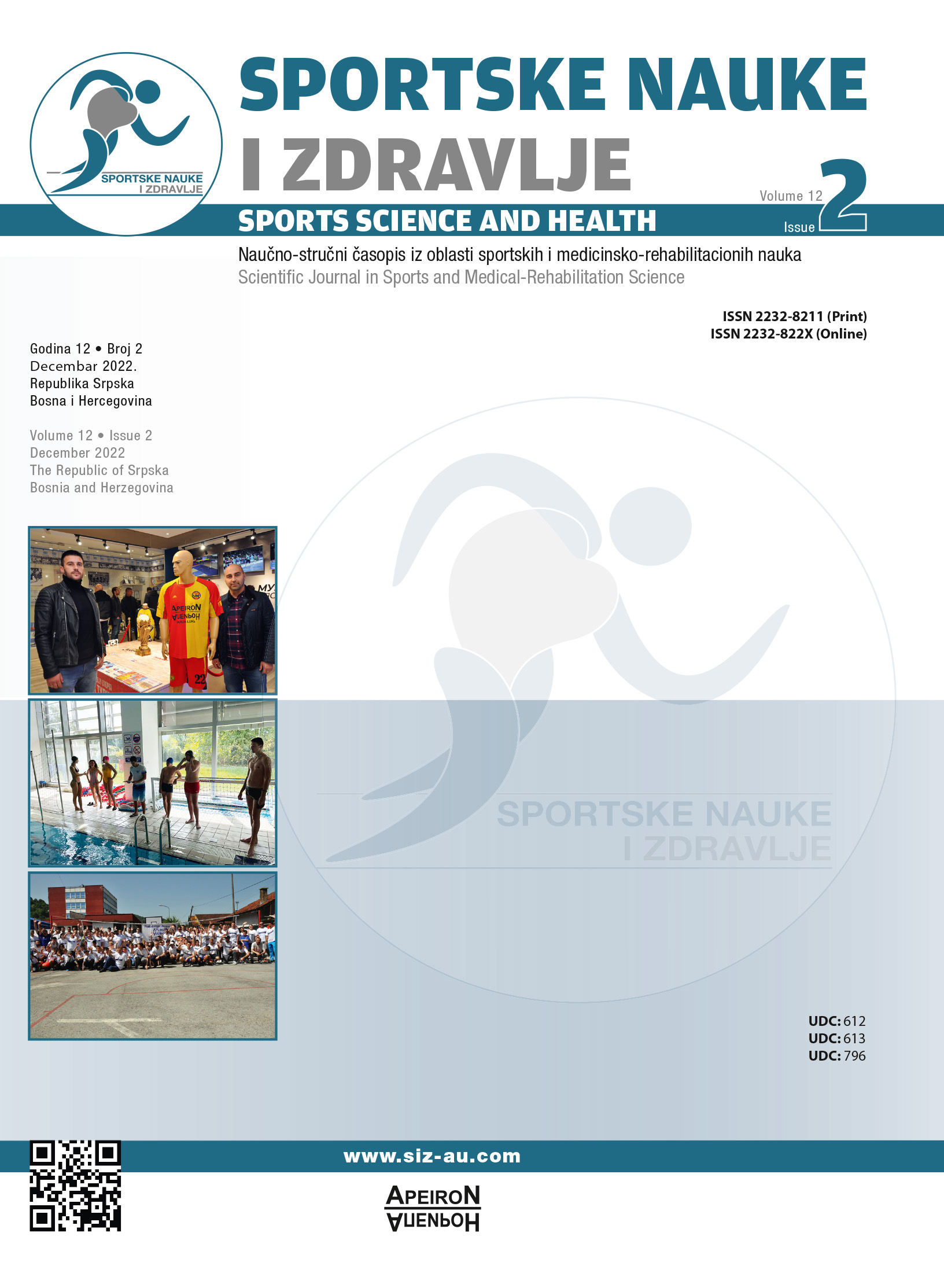Differences Between Children`S Antropometric and Physical Fitness Characteristics Urban and Rural Areas
DOI:
https://doi.org/10.7251/SSH2202120KAbstract
Purpose: The paper aims differences between children in urban and rural area of anthropometric characteristics and physical fitness in children aged 13 years old. Material and Methods: The sample of entities is 80 children aged 13 years old male, who are divided into two sub-groups such as 40 children from the center of Pristina and 40 children from the village Bardhosh of Prishtina. The sample of variables consists of 10 anthropometric variables and physical fitness, from those in anthropometric characteristics are variables and struck 3 of them 7 physical fitness. Results: Children from urban areas have shown better values for anthropometric characteristics, while children from rural areas have shown better performance physical fitness indicators. The T-test confirmed statistically significant differences only in the variables with body mass (p= 0.030), body mass index (p= 0.004). Courses in physical fitness have statistically significant differences in almost all variables vertical jump (p= 0.072), sit-up me worth (p= 0.000) upper-back (p= 0.009), sit and reach (p= 0.065) overhead medicine ball throw (p= 0.009). While in the body mass index (BMI) classification these body mass variables have shown significant differences (p= 0.000), body mass index (p= 0.000), standing long jump test (Mean Diff. 5.8, p= .078), sit-up (p= 0.000), upper-back (p= 0.003) and sit and reach (p= 0.050). Conclusions: We can find that children from urban areas have shown better value in anthropometric characteristics, while children from rural areas have shown better value in physical fitness.
